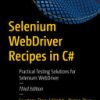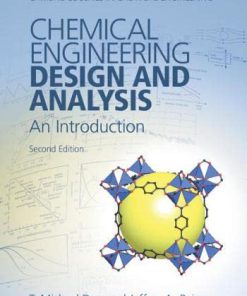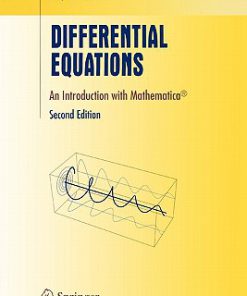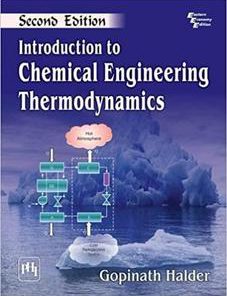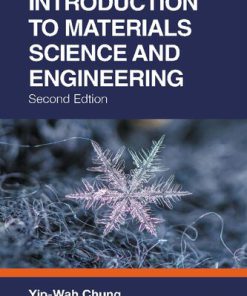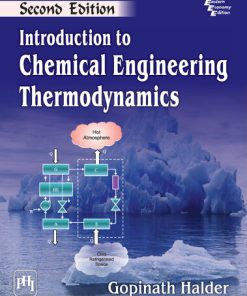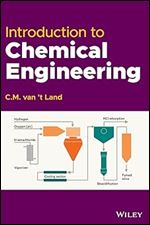Introduction to Chemical Engineering Analysis Using Mathematica 2nd Edition by Henry C Foley ISBN 9780128200513 0128200510
$50.00 Original price was: $50.00.$25.00Current price is: $25.00.
Introduction to Chemical Engineering Analysis Using Mathematica 2nd Edition by Henry C Foley – Ebook PDF Instant Download/Delivery: 9780128200513 ,0128200510
Full download Introduction to Chemical Engineering Analysis Using Mathematica 2nd Edition after payment
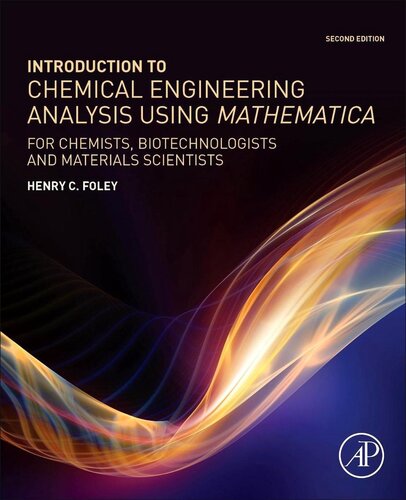
Product details:
ISBN 10: 0128200510
ISBN 13: 9780128200513
Author: Henry C Foley
Introduction to Chemical Engineering Analysis Using Mathematica, Second Edition reviews the processes and designs used to manufacture, use, and dispose of chemical products using Mathematica, one of the most powerful mathematical software tools available for symbolic, numerical, and graphical computing. Analysis and computation are explained simultaneously. The book covers the core concepts of chemical engineering, ranging from the conservation of mass and energy to chemical kinetics. The text also shows how to use the latest version of Mathematica, from the basics of writing a few lines of code through developing entire analysis programs.
This second edition has been fully revised and updated, and includes analyses of the conservation of energy, whereas the first edition focused on the conservation of mass and ordinary differential equations.
- Offers a fully revised and updated new edition, extended with conservation of energy
- Covers a large number of topics in chemical engineering analysis, particularly for applications to reaction systems
- Includes many detailed examples
- Contains updated and new worked problems at the end of the book
- Written by a prominent scientist in the field
Introduction to Chemical Engineering Analysis Using Mathematica 2nd Edition Table of contents:
Chapter 1: A primer of Mathematica
Abstract
Getting started in Mathematica
Basics
Equals (=), equal equals (==), and colon equals (:=)
Simple commands
Table
Do
Plot, Plot3D, and ContourPlot
Module
ListPlot, Fit, and Show
DSolve
NDSolve
NonlinearModelFit
Point: another versatile graphics method
Conclusion
Chapter 2: Elementary single component systems
Abstract
The conservation of mass principle, the concept of a control volume
Geometry and the left-hand side of the mass balance equation
Conclusion
Chapter 3: The draining tank and related systems
Abstract
The right-hand side of the mass balance equation
Conclusion
Chapter 4: Multiple component systems
Abstract
The concept of the component balance
Concentration versus density
The well-mixed system
Multicomponent systems
Conclusion
Chapter 5: Multiple phases – mass transfer
Abstract
Salt dissolution
Liquid-liquid system
Conclusion
Chapter 6: Adsorption and permeation
Abstract
Adsorption
Permeation
Conclusion
Chapter 7: Reacting species – kinetics and batch reactors
Abstract
How chemical reactions take place
No-flow/batch system
Simple irreversible reactions – first to Nth order
Reversible reactions – chemical equilibrium
Complex reactions
Conversion and selectivity
Time required for a specified conversion
Effect of stoichiometry
Complex reactions and the steady state approximation
Conclusion
Chapter 8: Flow reactors
Abstract
Introduction to flow reactors
Continuous flow reactors
Plug flow reactors
Time dependent PFR – complete and numerical solutions
Conclusion
Chapter 9: Additional examples
Abstract
Another look at the level-controlled tank
Perturbation of the inlet flow rate & control
Integration through and beyond the disturbance
General model for titration of a strong acid with a strong base
The pH of a weak acid
The partial molal volume of solution
The design of an optimal CSTR
A linear optimization
The transfer function
The artificial neuron (AN)
Conclusion
Index
People also search for Introduction to Chemical Engineering Analysis Using Mathematica 2nd Edition:
introduction to chemical engineering thermodynamics 9th edition
introduction to chemical engineering thermodynamics 9th edition solution manual
introduction to chemical engineering thermodynamics 7th edition pdf
introduction to chemical engineering thermodynamics 9th ed
introduction to chemical engineering textbook pdf
Tags: Henry C Foley, Chemical Engineering, Analysis, Mathematica
You may also like…
Engineering - Chemical Engineering
Chemical Engineering Design and Analysis: An Introduction 2nd Edition Duncan
Uncategorized
Differential Equations An Introduction with Mathematica by Ross 9781475739497 1475739494
Engineering - Chemical Engineering
Introduction to chemical engineering thermodynamics Hendrick C. Van Ness
Mathematics - Mathematical Statistics
Uncategorized
INTRODUCTION TO MATERIALS SCIENCE AND ENGINEERING. 2nd Edition Yip-Wah Kapoor Monica Chung
Engineering - Chemical Engineering
Introduction to Chemical Engineering Thermodynamics 2nd Edition by Gopinath Halder 9788120348974
Chemistry - Technical & Industrial Chemistry


